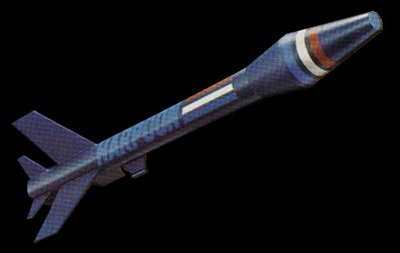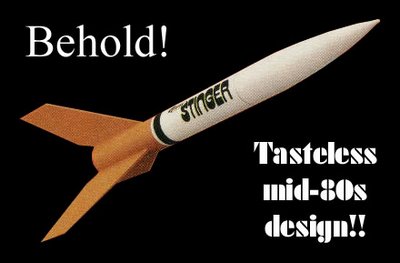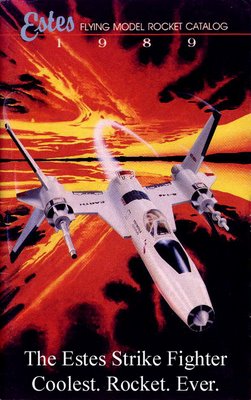Experimenting with video capture

I mentioned in the last post that I had videos from yesterday's launch but no photos. I shot the video with a Pure Digital Point & Shoot video camcorder ($129 at Target). Today I downloaded VirtualDubMod and an XviD codec and started playing with the movies.
First up: image capture. My success with catching the rockets at liftoff with the digital camera has been fair-to-middlin'. With VirtualDubMod I can go through the launches frame-by-frame to get the pictures I want, and to see exactly what happened during the interesting flights.
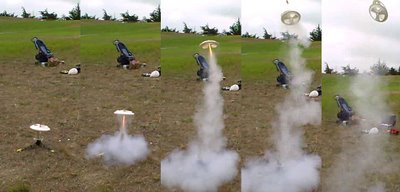
For example, the disintegration of the Serve 'N Store saucer (above) was too quick for the eye to follow, but not for the camera. In the fourth frame, you can see the motor has flown through the saucer and blown the plates apart. They fluttered down harmlessly--and unharmed--while the motor took off on its own. Fortunately the motor was moving fast enough and had burned enough propellant to be stable, or things might have gotten too interesting.

The image captures serve another, unexpected purpose. It turns out that I never got any photos of the Evil Toothfairy's Flying Laboratory of Dental Torment after I finished building it. Then it was utterly destroyed on its first flight. The only pictures of the whole rocket are the frames of the liftoff (above). In the second frame, you can see a little smoke coming out a little over halfway down the length of the rocket. That's not a CATO in the making, that's the gap between the end of the body tube and the ring fin, which was suspended well behind the body tube on four pylons. You can see this more clearly in the final frame.

The Laughing Cow saucer had no problems. It's a great little performer, and I'll probably have it forever. It's cardboard, so it's relatively burn-resistant; it's waaay over-stable, so it's not going any direction but up; and it tumbles down, so it always lands near the pad. I suppose some vicious combination of freak gust and rocket-eating tree could do it in someday, or a full-on explosive CATO. It's a great little rocket, and I love it.
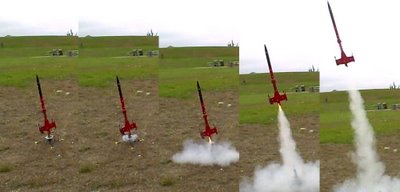
I love the Laughing Cow saucer, but I Luh-huh-huh-OVE the Thunderhawk. It's just a big, beautiful, badass flyer. Vicki, my long-suffering spouse, said that its flights were much cooler than she expected, but that they freaked her out with all the noise and smoke. Psshhh...YEAH! That's the idea.
Unfortunately, on the 'Hawk's second flight of the day, the chute did not deploy completely and she came down a little faster than intended. That's how the fin cracked. I'm sure all the serious BARs out there will think I'm a dumbass when I admit that I've been flying it with the stock Estes recovery system. I always planned to upgrade to a Kevlar, nylon, and Nomex system someday, and that time is now. Fortunately, the damage is minimal and easily fixed, so I got off pretty easy. Just gotta get her fixed up and back into the air.

